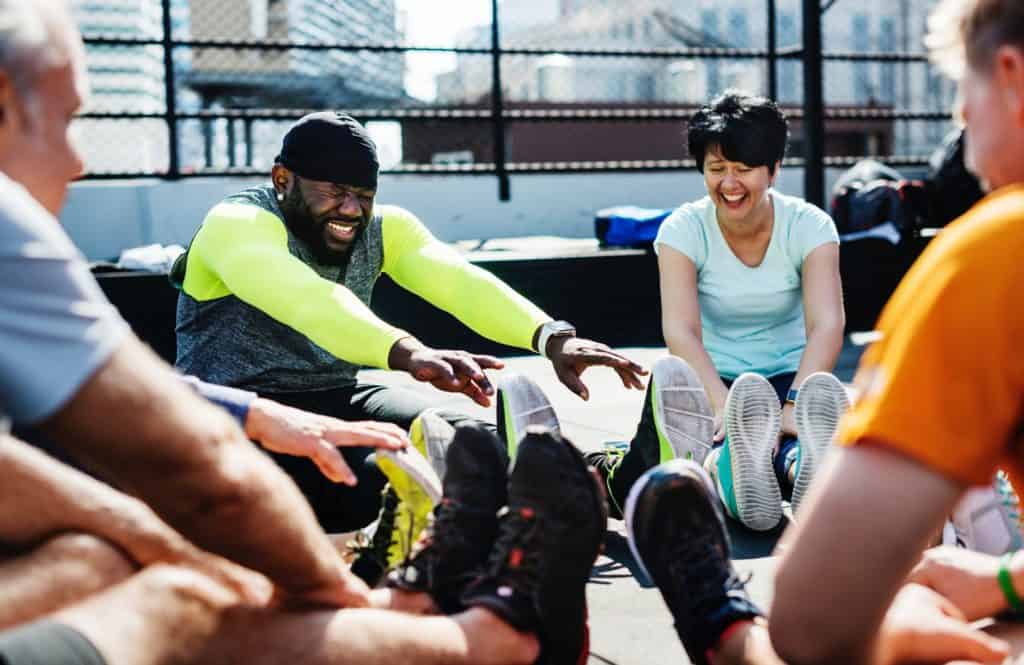Easily Incorporate Active Recovery
If you just recently completed a very high-intensity workout (or maybe a couple of days in a row of workouts that are more intense than you are used too), it’s probably time to give your body a rest. Overtraining is a major risk when you don’t give yourself a chance to recover. But how do you make sure you’re doing it in the best way for your body?
You could take a day to sit on the couch to rest (aka passive recovery), and sometimes we all need that! However, your body actually will benefit more from active forms of recovery than it will sitting around. Active recovery can help to better circulate blood flow throughout your body, get rid of lactic acid, and be a good preventative to overly sore muscles.
Here, we’ll break down the best ways to easily practice active recovery so that you can approach your next high-intensity workout stronger than ever!
1. Yoga and Stretching
You probably already know that you should be stretching before (dynamic) and after (static) all of your workouts in order to prevent injuries and soreness, but it’s also a great practice to utilize on active recoveries.
Yoga, while not the same as stretching, is another great, low-impact exercise you can do to aid in the recovery process. Try pulling up a 20-30 minute yoga session on Youtube designed to help you recover (not all classes are created equal, so shop around). Look for practices labeled ‘Hatha’ or ‘Vinyasa’ if you want to stay with low impact classes that focus on flexibility, stability, or recovery without going too intensely.
2. Steady-state, Low Impact Cardio
Sometimes the best form of active recovery involves keeping your body moving, even in a light, low impact way. Things like walking, biking, hiking, swimming, or even light jogging can be a great way to get your blood pumping while still recovering.
Even just a few minutes of light cardio can help to loosen up your muscles and prevent stiffness. Hopping on a treadmill, hitting the sidewalk, or even taking an easy spin class can make the difference between “I can’t make it up the stairs” and “This isn’t so bad” after a pretty rough leg day.
3. Light Resistance Training
If you’ve been lifting heavy weights recently, you might be surprised to find out that you can still lift on recovery days. You probably just can’t (and might not want to) lift as much as you normally would on regular workout days.
Performing higher rep exercises with lighter weights, similar to low impact cardio, can help to promote blood flow to your muscles as they recover without tearing muscle fibers or straining them.
4. Activation Exercises
If you’ve been working out for a while now, you might be familiar with something called the “mind-muscle connection.” While working out is obviously a physical activity, the mental side of exercise is equally important to making sure that you’re seeing progress in your workouts.
Activation exercises are crucial when you’re preparing to workout specific muscle groups and ensuring that you have this mind-muscle connection, but they can also be useful to incorporate into recovery days.
Try incorporating hip and core activation exercises into your active recoveries to prepare for the more intense work you have coming (or that you just conquered).
Need some help?
Shape Success, Live Exceptionally
Hit that button, and get started today.
5. Myofascial Release
Myofascial release may sound like fancy terminology but really what this means is using pressure and massage to eliminate muscle soreness and stiffness. Releasing fascial tissue can involve actually going to a massage therapist, or you can do it yourself!
One of the easiest ways to practice self-myofascial release is by getting a foam roller (or even a tennis ball) to massage any sore muscles you might have. This helps to reduce lactic acid build-up as well as improving flexibility.
Active Recovery Ideas to Try Today
It can be easy to want to go all out every day when you first start working out, or even once you’ve been working out for a while. However, practicing active recovery is absolutely crucial to ensuring that you don’t get injured and can return ready to go harder than ever in your next workout.
Let Us help You Out
At CONDITIONerd we are here to help you achieve better physical and mental health through exercise. Check out the plans we offer to our customers and see if you could benefit from working with our team. And if you have questions, you can always contact a CONDITIONerd team member.
Personal trainers, like those found here, can help guide you on your pathway towards reaching your fitness goals, whether that is getting bigger, stronger, faster, more lean, or just generally feeling better.
We can get you setup with a periodized workout plan, supplement information, and advice on nutrition to help you reach your goals.
The only thing you need is some motivation and a willingness to change some old habits.
Get into contact with us to find out what membership is right for you. In a CONDITIONerd program, you’ll be surrounded by others who can help you to get where you want to be.
Generally, our clients start to see some pretty awesome changes in 2-3 months time, some sooner.

